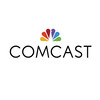Or listen in your favorite podcast app
Apple Podcasts / Google Podcasts / Stitcher
When he became the CIO of Comcast, Rick Rioboli (LinkedIn) was amazed by just how broad his role had become. Moving from product engineering to having a hand in just about every aspect of the business was a big change for Rick, but one he enjoyed. He discusses that journey on this episode of IT Visionaries, and he also goes into how Comcast views the customer experience, the way he is leading innovation at the company, and what the future of tech, connectivity and IT talent looks like.
Best advice: “Really understand the scope of the role and the impact that you have across the organization. I think that’s probably the first step and one of the things that I needed to do when I first stepped into the role. Then the other thing I would say is I think traditionally the CIO role has sort of a traditional stigma attached to it. And I would say don’t let yourself be defined by the role. Take the time to try to define the role yourself because I think in many organizations, the CIO role can be thought of as this tactical IT role. I think for folks that really stepped back and really look at what they can do in these roles, it’s pretty, pretty huge and pretty impactful. But you really do have to step back and almost forget about the title and really look at what you can do with the role.”
Key Takeaways:
How IT has changed — (4:30)
When Rick first started off he was doing IT, but the IT department was really seen more as a cost center than anything else. After about seven years in IT, Rick decided to leave that area so that he could get more involved in the business side of things. Fast forward to now and IT is deeply tied to business strategy, goals and how the company runs at a high level.
“It was very much thought of as something a company had to do. Now you look at the company’s strategies and it’s so much around data and data intelligence. I feel now it’s a critical part of their business strategy.”
Customer Experience at Comcast — (5:30)
Rick explains that everything you do must start with understanding what the end-to-end experience is with the customer. Comcast went from being a classic cable company to being a product and technology company. In the last ten years, they started releasing really exciting products like the voice remote and a remote that lets you change the channel with your eyes. And in the last four years, Rick says the company really started focusing on the end-to-end experience.
“We started really thinking about the end to end experience and what it means for a customer from the moment they are exposed to Comcast from a sales and marketing perspective, all the way through when they’re activated with our products.”
Advancing to the role of CIO — (7:30)
For the first 12 years at Comcast, Rick worked on the product engineering side, so he built the technology that they put in front of the customers. In the last two years, though, he has taken on the role of CIO and he’s been surprised by its scope of responsibilities.
“It’s amazing the breadth of the CIO role and all the pieces it touches within in the company. And so really when you look at the functions that we support right now, my team, we literally build and manage the technology that goes all the way from marketing and sales all the way through to the end customer life cycle. It literally touches every aspect of the customer, but also almost every aspect of the company itself. And it wasn’t until I actually was in the role for about six months that I realized just the amount of breadth the CIO role has within a company.”
How does innovation happen — (12:00)
There are a couple of different sources of innovation within the company. There are working sessions where they put the customer first and, from a cross-functional perspective, they think about how to make the customer experience better. Comcast also does something it calls “technology bottoms up,” which is a process where they look at the technology they already have and figure out other uses for it. For example, when voice recognition technology emerged, they looked at how to leverage voice technology and the metadata and content discovery platform they had just built. They didn’t have a product in mind, they just tried to approach things in new and different ways to interact with the products they already had. “It was technology exploration,” Rick says.
“We put the customer in the center and from a cross-functional organization we start to think about how we want to change the end-to-end customer experience. And by getting multiple functions in there, the UX team, the product team, the engineering teams, IT, it’s really amazing that the ideas that come to the table when you do that.”
How the stakes are constantly being raised — (18:00)
In today’s constantly-connect world, Rick says that having basic access to the Internet is becoming a need for some people akin to air and water. Because of this modern mindset, Rick says that Comcast and his team has had to really step up their game when it comes to things like internet reliability, connectivity, and making the products they provide easy to use and connect with.
“We often joke that internet connectivity is more important to some people than electricity or running water in their homes. It’s become sort of the most important capability within a home. And over the last several years, we’ve really started to up our game on the internet.”
The future of the internet, speed, and connectivity — (24:00)
Rick cautions that it is always tricky to try to predict things, but in the next three to five years he believes that people will stop thinking about in-home internet services versus mobile versus hot spots. It’s going to be a more seamless process. Additionally, the processing speed will continue to get faster and faster and customers will have way more control of everything. Voice controls will continue to evolve, the IoT will play a larger role in connectivity, and overall, there will be so much more to connect with. What that means, though, is that customers will need more and more ways to connect with Comcast and other companies they buy from. Rick says that creating easy, seamless ways for those interactions to happen will be a priority over the next few years.
“I think what you’ll see more of specifically on the internet side is we’re going to continue to add features on top that make it simple and secure and give folks control. So I think you’ll see more capabilities around security….What you’ll see on the internet side is more and more capabilities that allow customers to ensure you’ve got great connectivity within the home and that allows you to control that access really well and put a security layer on there so that as you’re using that service it’s a highly secure service. I also think over time we’re going to be doing more and more with the internet of things and connecting other devices within the home.”
“We’re looking at how to create an easy and simple experience when they interact with us.”
Where A.I. and M.L will fit into the future of tech — (31:00)
Comcast and Rick’s team have been working with A.I., machine learning and deep learning for at least the last seven years. In fact, the original voice remote was built heavily with data from A.I. and machine learning.
“As a company, we’ve invested a lot of time and money in, in leveraging machine learning and deep learning technologies, but it’s been more on the product side. And what we’ve done now over the last two years is really start to experiment with how can we take that technology that we already have a lot of experience in and leverage it to solve business problems.”
Sourcing talent — (34:00)
There are two key areas that Rick looks at when he is hiring new talent. The first is deep technical knowledge. But the second is whether they would be a cultural fit within the organization. Comcast is also developing a junior pipeline and working with universities to create internships and opportunities for those who recently graduated. Comcast is trying to shift people’s idea of the company from a cable company to a technology and product-focused company that can attract the best talent.
“At Comcast, we have a very unique culture and it’s one of the reasons I’ve stayed for 14 years. Our culture is very collaborative and I think we have developed a really strong culture around the technical talent where teams get together and share concepts, share ideas, and agree on execution. And one of the things that we changed a bunch of years ago was we integrated our product development teams and our engineering technology teams together. It was around the same time that we transitioned into being an agile organization. When we did that, we were able to create smaller teams that were more autonomous. And I think with more autonomous teams, they’re able to do a lot more in terms of move quickly, collaborate, iterate, deploy, learn from customer experiences, iterate, deploy. And so I think over time we’ve built a fantastic culture here. And that’s one of the things that I look for the most.”





